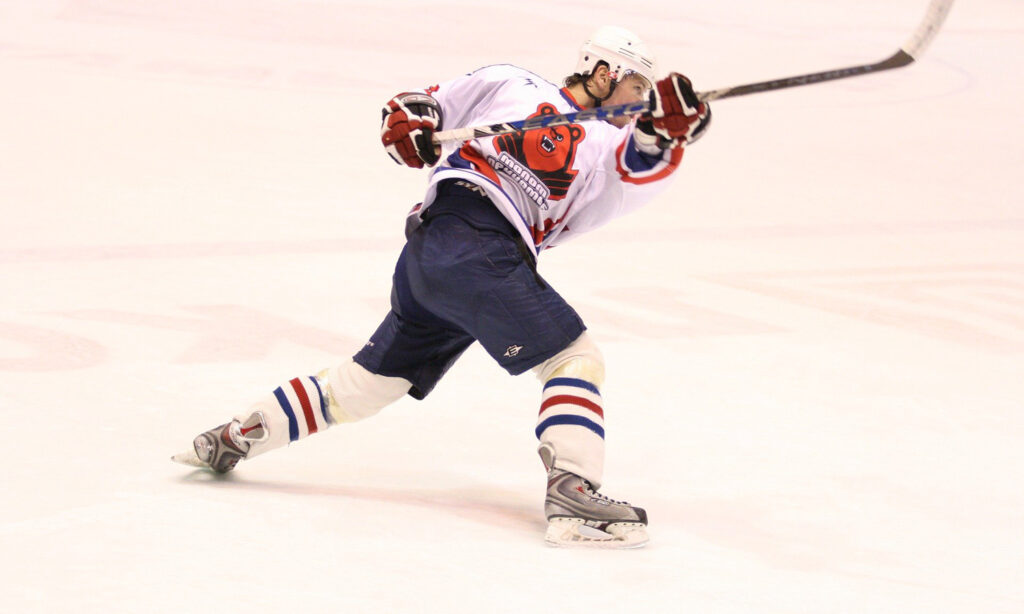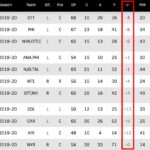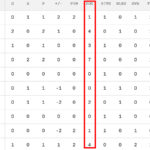When it comes to statistics used to evaluate NHL players, the most common that come to mind are goals, assists and total points. Naturally, the more a player scores, the more valuable they are to their team.
There are many qualities to a player that increase their abilities. Those include Shot Power, Speed, Agility, Stickhandling, Hockey IQ and so on. Some of these abilities can easily be measured (i.e. shot power), while others are much harder (hockey IQ).
One statistic that can be measured is shooting percentage. Shooting percentage is simply the amount of goals scored per shots on net.
But what is a good shooting percentage? Before we break down the details, let's start with the question you searched for...
What is the Average NHL Shooting Percentage?
The average shooting percentage for the 2018-19 NHL season was 9.46%. A total of 7,577 goals were scored on 80054 registered shots. Nathan MacKinnon led all players with 365 shots, scoring 41 goals for an 11.2% shooting percentage.
Just keep in mind that although MacKinnon's shooting percentage was greater than the average, it was the lowest among the top ten goal scorers. Tap here to see the top 10 Shot Takers for the 2018-19 NHL Season.
Shooting Percentage in Player Stats
NHL shooting percentage can be observed in player statistics under the S% column. It is calculated the following way:
Goals Scored (G) x 100 = Shooting Percentage (S%)
Total Shots (S)
Example for Leon Draisaitl, forward for the Edmonton Oilers:
50 Goals x 100 = 21.7% Shooting Percentage
231 Shots
Now that we've shown you how to calculate the player Shooting Percentage, let's take a look at the 2018-19 NHL Season top goal scorers.
Top 10 Goal Scorers and their Shooting Percentage (2018-19)
Player Name | Goals Scored | Shots on Net | Save Percentage (S%) | |
|---|---|---|---|---|
1 | Alex Ovechkin | 51 | 338 | 15.1 |
2 | Leon Draisaitl | 50 | 231 | 21.7 |
3 | John Tavares | 47 | 286 | 16.4 |
4 | Steven Stamkos | 45 | 234 | 19.2 |
5 | Patrick Kane | 44 | 341 | 12.9 |
6 | Nathan MacKinnon | 41 | 365 | 11.2 |
7 | Cam Atkinson | 41 | 295 | 13.9 |
8 | Nikita Kucherov | 41 | 246 | 16.7 |
9 | Connor McDavid | 41 | 240 | 17.1 |
10 | Alex DeBrincat | 41 | 220 | 18.6 |
What is a Good Shooting Percentage?
In today's NHL, 15% is a good shooting percentage amongst premium goal scorers. A premium goal scorer is any player that reaches 30 or more goals during the season.
For the 2018-19 season, there was a total of 45 players that achieved the 30+ benchmark.
Those 45 players accounted for 1,633 of the 7,577 total goals scored on the year – 21.6% of all goals.
These same players were responsible for 10,878 shots on net of the 80,054 total shots taken – 13.5% of all shots.
And hence my formula to calculate a good shooting percentage.
1633 Goals Scored x 100 = 15% (S%)
10878 Total Shots (S)
Take note that in order to get more shots on net, players need to as much playing time as possible. And in order to earn more ice time, they need to be an offensive threat.
There are many factors that make a player an offensive threat. For a goal scorer, a hard shot and a quick, accurate release is a good start.
We can go further into what a complete player would look like, but we’ll leave that for another discussion.
Who has the most shots in NHL History?
That honor goes to one of the greatest defensemen to play the game: Raymond Bourque. He managed to register 6209 shots on net throughout 1600+ games played. What’s more shocking is that his shot percentage was mere 6.6%, well below today’s average.
But there is a very simple explanation for this – he played on defense. In fact, the next leading defenseman for shots, Al MacInnis (#6 overall), also had a 6.6% shooting percentage. It should be noted that MacInnis had, at one point, the hardest slap shot in the NHL.
Defensemen typically take shots from the point, away from the most dangerous areas. This is part of the strategy. Shoot on net and hope your forwards can pick up the rebounds.
Top 10 NHL Shooters of All-Time
Player Name | Goals Scored | Shots on Net | Save Percentage (S%) | |
|---|---|---|---|---|
1 | Ray Bourque | 410 | 6,209 | 6.6 |
2 | Jaromir Jagr | 766 | 5,637 | 13.6 |
3 | Alex Ovechkin | 711 | 5,588 | 12.7 |
4 | Marcel Dionne | 731 | 5,363 | 13.6 |
5 | Phil Esposito | 717 | 5,166 | 13.9 |
6 | Al MacInnis | 340 | 5,157 | 6.6 |
7 | Mike Gartner | 708 | 5,090 | 13.9 |
8 | Wayne Gretzky | 894 | 5,088 | 17.6 |
9 | Brendan Shanahan | 656 | 5,086 | 12.9 |
10 | Brett Hull | 741 | 4,876 | 15.2 |
Relationship between Shooting Percentage and Save Percentage (Goalies)
Similar to how you calculate the shooting percentage, the save percentage for goalies can be determined by dividing the number of saves by total shots.
Saves (Svs) = Save Percentage (SV%)
Shots Against (SA)
Example for Andrei Vasilevskiy, goaltender for the Tampa Bay Lightning:
1585 Saves = 0.925 SV%
1713 Shots Against
The Save Percentage is actually reported as a fractional value rounded to the third decimal place (i.e. 0.905 SV%).
Although it is tempting to calculate the average goalie save percentage by subtracting the shooting percentage from the total, there is a flaw in this approach.
Therefore, the average save percentage is not actually 100% – 9.46% = 90.4% or 0.904. This calculated average is wrong!
The reason is that some of the goals scored were on an empty. Empty net goals register in the player or team shot count, however not that of the goaltender.
The actual average Save Percentage amongst goalies for the 2018-19 NHL season was 0.910. If you’d like to read a full report on this, make sure to read my blog post on What is the Average Save Percentage in the NHL?
I discuss the average save percentage for goalies on playoffs vs non-playoff teams, and also compare starting goaltenders vs their backups.






